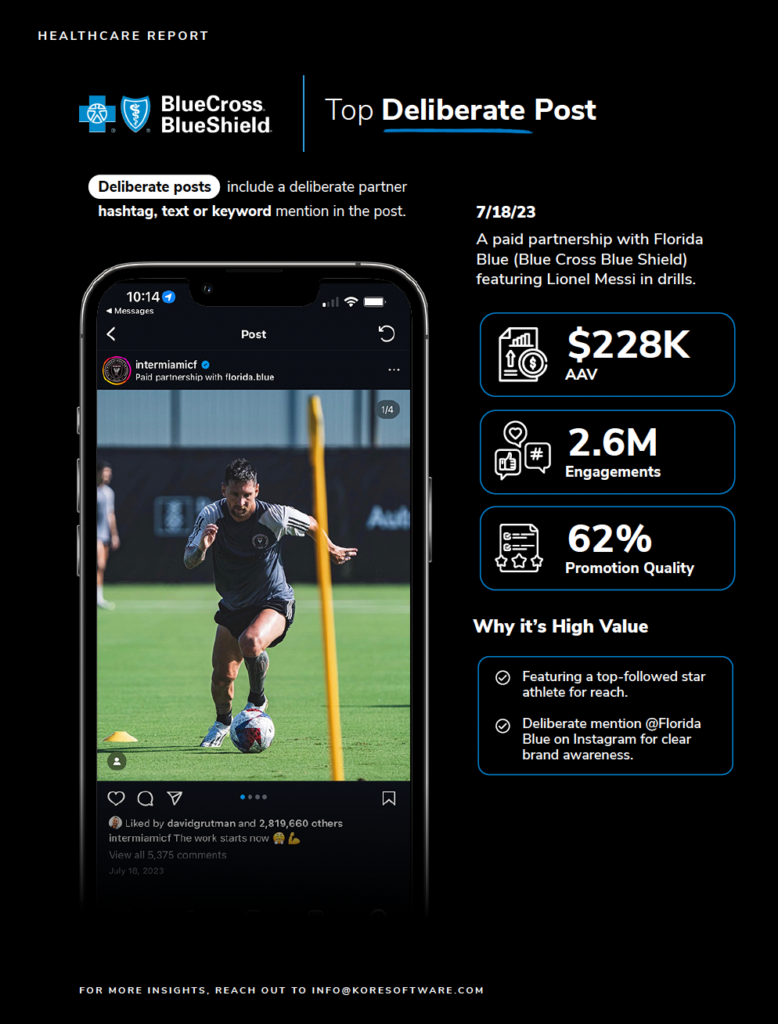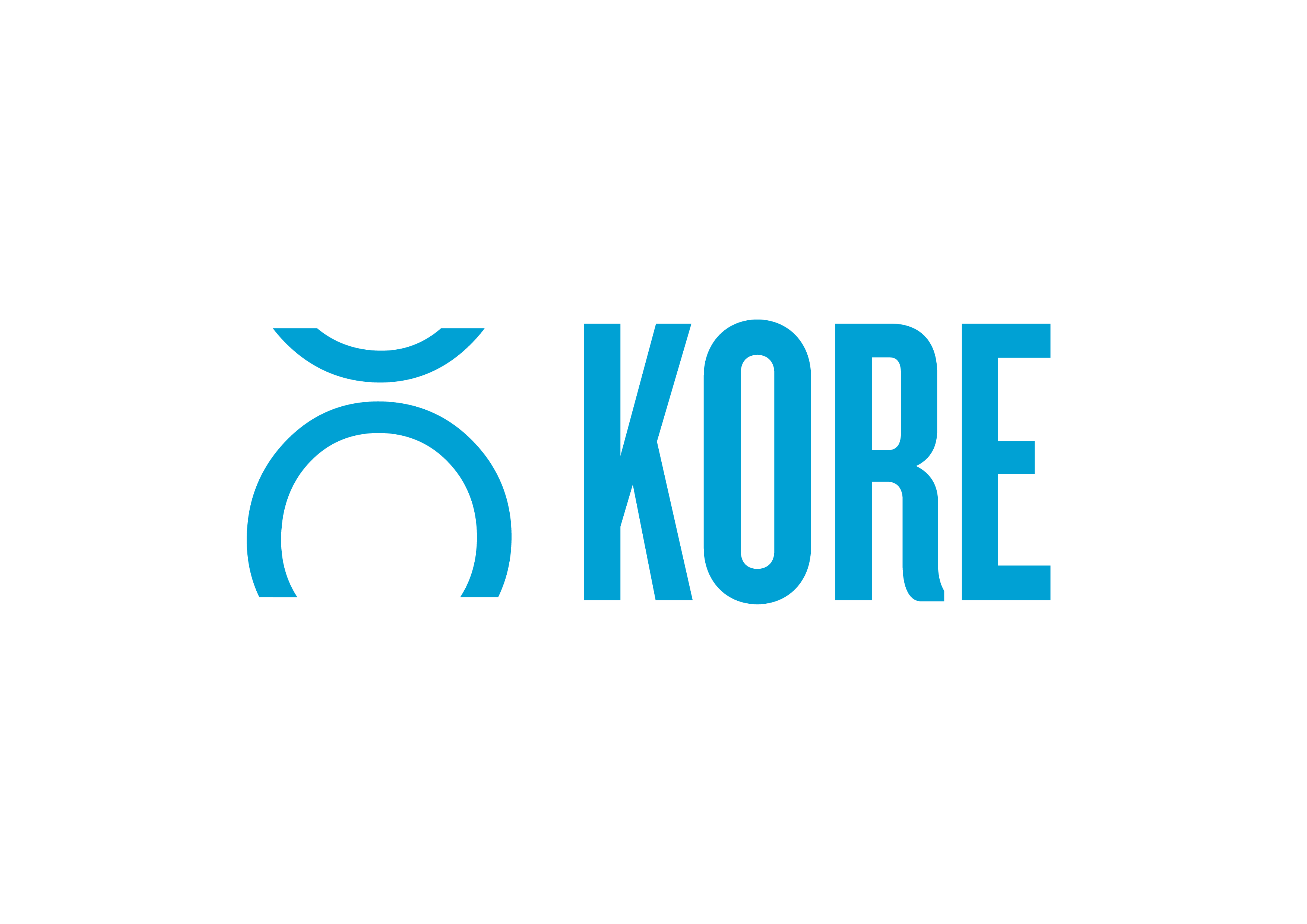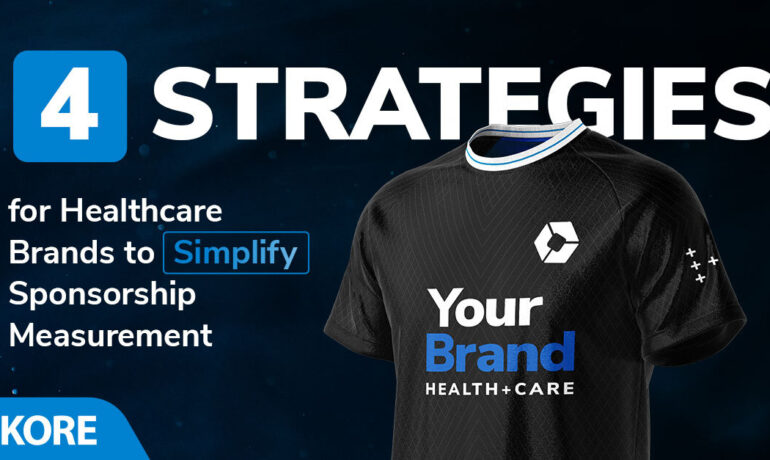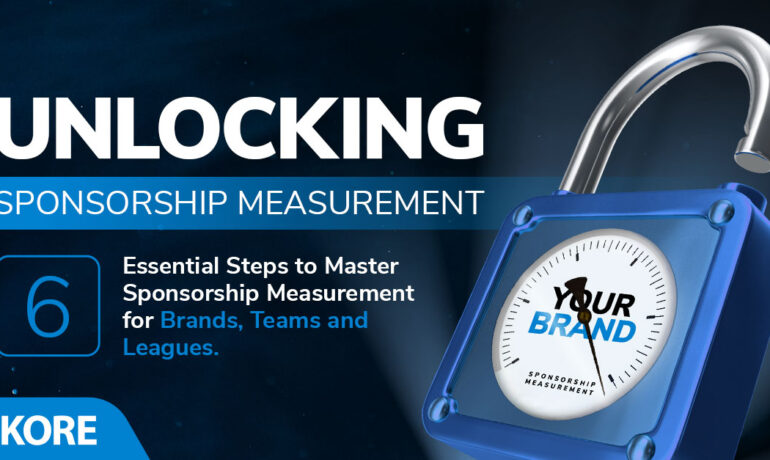4 Strategies for Healthcare Brands to Simplify Sponsorship Measurement
What You’ll Learn from This Article:
- The importance of measuring sponsorship ROI and its challenges.
- Strategies for effective sponsorship measurement.
- Real-world examples of successful sponsorship measurement from major healthcare brands like Blue Cross Blue Shield, Kaiser Permanente, Optum, UnitedHealthcare and more
- Option to download insights into who and what is driving social value for the top US healthcare brands and practical tips to improve partnership social strategies.
According to KORE’s 2024 State of the Industry report, 85.2% of brands believe measuring sponsorship ROI is important or very important, yet only 22% receive regular data and insights from their partners.
Overcoming Challenges in Measuring Sponsorship ROI
Despite its importance, measuring sponsorship ROI presents several challenges:
- Complexity of Metrics: Sponsorships involve multiple touchpoints and indirect benefits, making it difficult to isolate and measure their impact. Some of the largest brands we work with employ a mix of brand exposure metrics, sales data, and social media engagement to gauge effectiveness .
- Data Integration: Integrating data from various sources (e.g., digital platforms, event attendance, media coverage) is essential but challenging. Often brand clients come to us while using digital platforms to track engagement metrics but face difficulties in measuring its value or integrating online and offline data .
- Qualitative Metrics: Measuring qualitative aspects, such as brand affinity and experiential impact, adds another layer of complexity. Red Bull focuses on media coverage, participant feedback, and brand surveys to assess their sponsorships’ effectiveness .
Getting Started with Effective Sponsorship Measurement
To overcome these challenges and effectively measure sponsorship performance, brands and rights holders can follow a structured approach:
- Set Clear Objectives: Define what success looks like for your sponsorships. Objectives may include increasing brand awareness, driving sales, or enhancing brand image. KORE’s benchmarking reports highlight that aligning sponsorships with strategic goals is critical.
- Collect Comprehensive Data: Gather data from various sources, including social media analytics, event attendance, sales figures, and audience feedback. Use tools like KORE’s comprehensive sponsorship platform to streamline data collection and integration .
- Analyze and Report: Use advanced analytics to interpret the data and generate insights. KORE’s end-to-end solution offers a centralized platform for analyzing sponsorship performance and creating detailed reports .
- Continuously Improve: Review and refine your measurement strategies based on the insights gained on the regular. Engage with your partners to ensure alignment and optimize future sponsorships.
Real-World Sponsorship Measurement Examples
Measuring sponsorship performance has always been challenging due to the multifaceted nature of sponsorship engagements. Here are some examples of brands and their approaches to measuring sponsorship performance over the last year, illustrating the difficulties and innovations in the field:
Real-World Examples: Healthcare Brands Measuring Sponsorship Performance
- Blue Cross Blue Shield
Blue Cross Blue Shield, which ranks in the top 5 healthcare brands for earned social value in our 2024 Healthcare Sponsorship Report, measures sponsorship performance through comprehensive health and wellness programs. They utilize data from community events, member engagement metrics, and health outcomes to assess the impact of their sponsorships on community health. Below is a snapshot of how we measured one Blue Cross Blue Shield’s top earning posts for social value, which contributed to their high ranking in our report.

- Kaiser Permanente
Kaiser Permanente focuses on integrating health data and sponsorship engagement metrics. They track the effectiveness of sponsored health initiatives by analyzing patient outcomes, event participation, and media coverage, emphasizing improving community health metrics. Our recent Healthcare Sponsorship report provides a case study on how this leading brand can improve its brand value across social with simple tweaks, that garner big results.
- Optum
Optum employs a data-driven approach to measure sponsorship performance. They combine digital engagement metrics, patient feedback, and healthcare utilization data to evaluate the ROI of their sponsorships. This holistic view helps them optimize future sponsorship strategies.
- UnitedHealthcare
UnitedHealthcare uses a mix of quantitative and qualitative metrics to gauge sponsorship effectiveness. They assess the impact of their sponsorships on brand awareness and member satisfaction through surveys, event attendance, and health improvement indicators.
- Mayo Clinic
Mayo Clinic measures the impact of their sponsorships through detailed analysis of patient outcomes and community engagement. They track media exposure, patient testimonials, and health program participation to determine the success of their sponsorship initiatives. Our recent Healthcare Sponsorship Report details how The PGA Tour’s social strategy has impacted their partnership with the Mayo Clinic over the last year.
- Cedars-Sinai
Cedars-Sinai leverages advanced analytics to assess sponsorship performance. They integrate data from patient care, community events, and media outreach to evaluate the effectiveness of their sponsorships in enhancing brand image and community health.
Holistic View of Sponsorship Measurement
These healthcare brands have been navigating the complexities of sponsorship measurement to achieve meaningful results. Their methods highlight the importance of comprehensive data collection and integration to drive sponsorship success. But how these brands gain these insights to holistically measure the value of their sponsorship performance is a whole different conversation. From KORE’s technical perspective, this translates into using a single platform that provides total visibility of investments and rights, smarter integrations, data aggregation, and real-time custom reporting and insights.
Evaluate Sponsorship with Social
One of KORE’s key tools is Evaluate Social (formerly the Hookit) tool, which is helpful to see the entire journey, not just product pushes, or product placement. Brand awareness is critical to sponsorship. The ability to tie brand awareness back to specific measurements of partnerships with athletes, teams, leagues, influencers, media properties and more can be done with the most advanced and conservative valuation methodology.
Having the right tools in place to perform these measurements is critical to overcoming these challenges and gaining accurate insights. Check out our article, Sponsorship Management Mastered, which outlines several case studies on using various tools for sponsorship measurement, demonstrating how advanced analytics can drive success. Learn more about the tools and solutions that brands are using to measure sponsorship here.
Grow your healthcare brand’s impact with strategic partnerships and social media insights.



